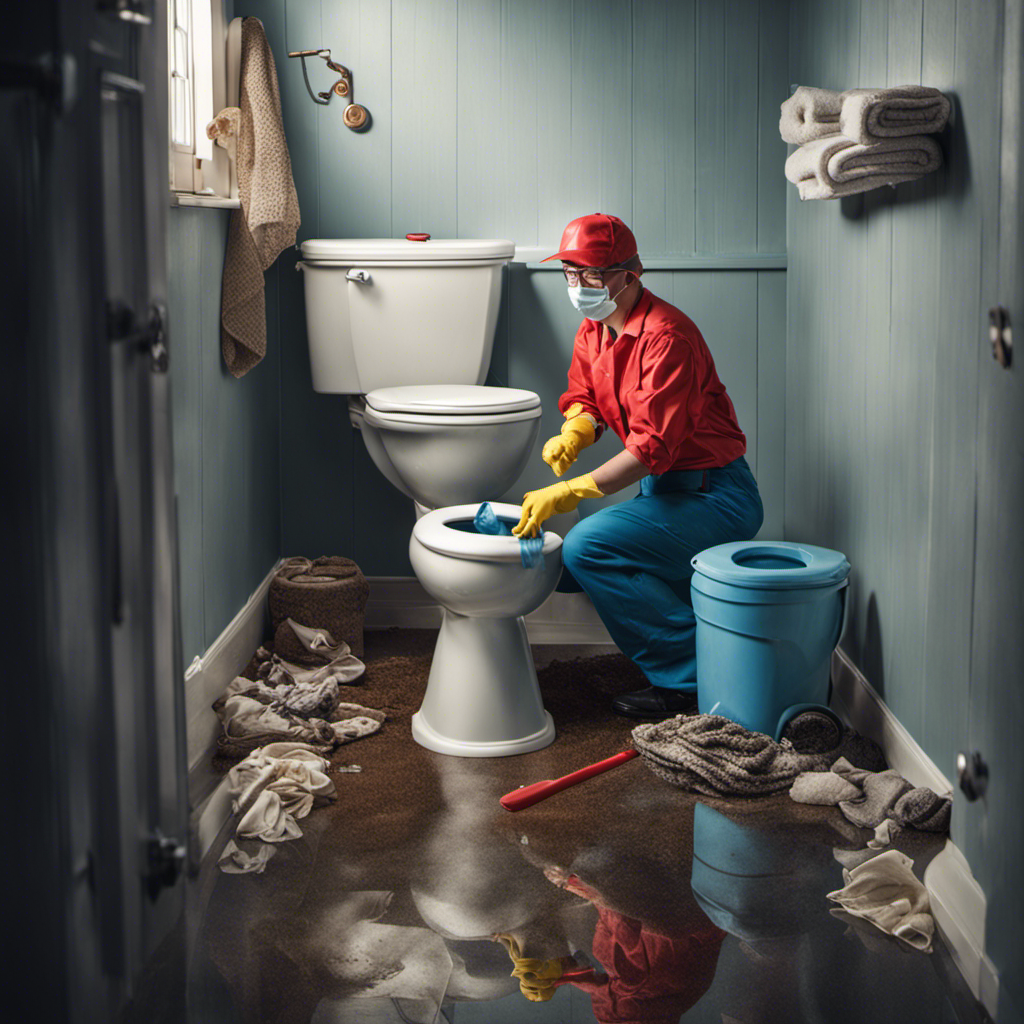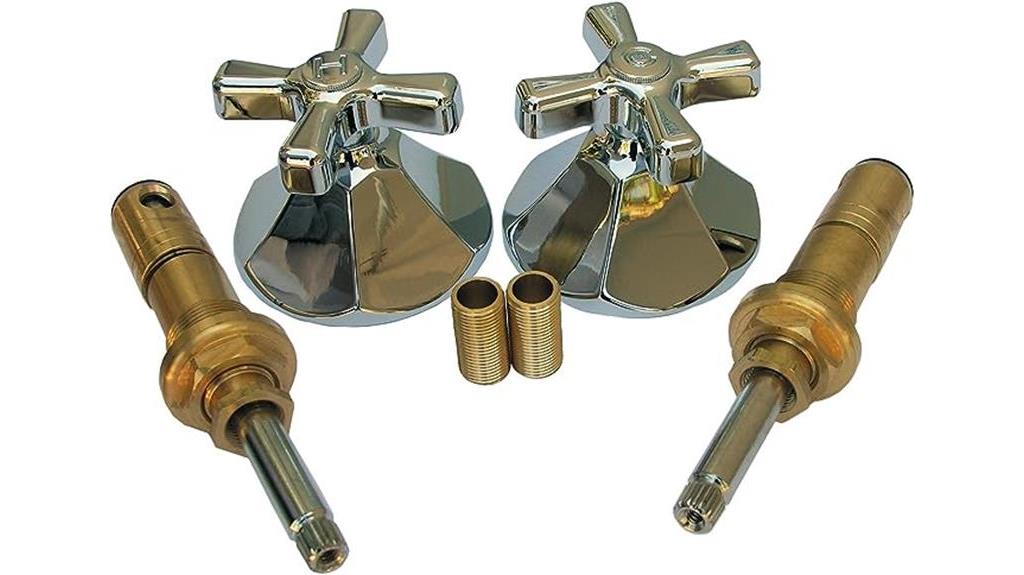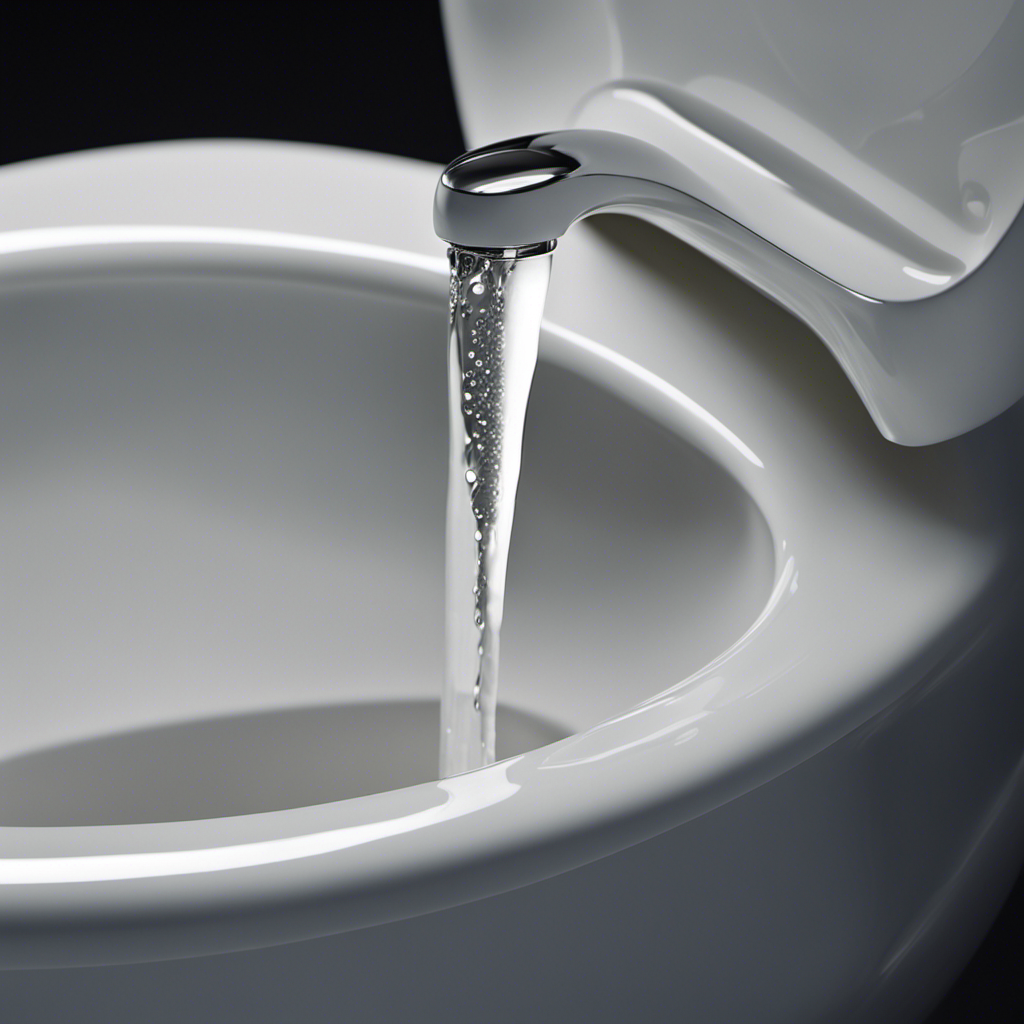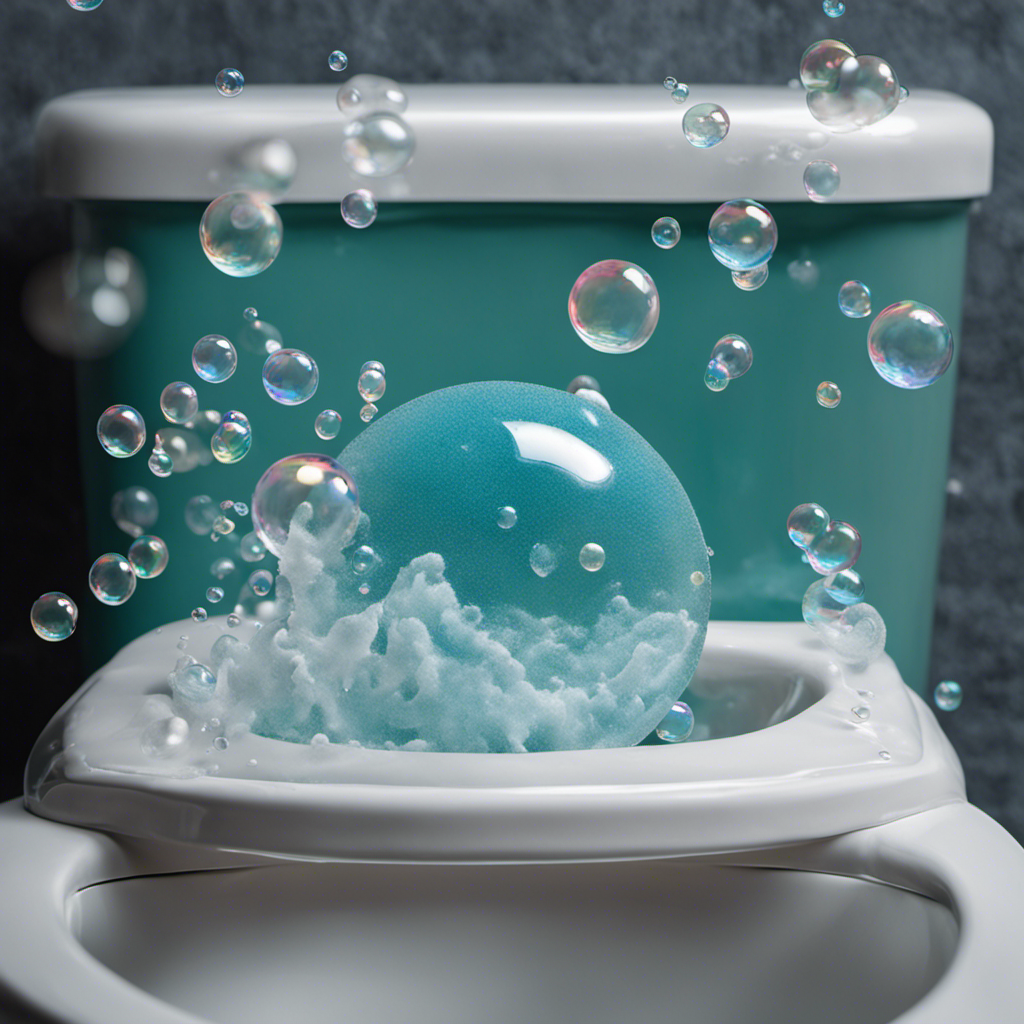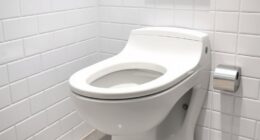I’ve been there – standing in front of a clogged toilet, feeling the panic rise as water threatens to spill over the rim. But fear not, because in this article, I’ll be your guide through the murky waters of unclogging.
From common causes to step-by-step plunging techniques, I’ll equip you with the knowledge and tools you need to conquer any clog.
So, let’s dive in and flush those worries away!
Key Takeaways
- Proper toilet clog prevention and proactive addressing of issues are crucial in preventing clogged toilets.
- Tools and methods such as plungers, toilet augers, and chemical drain cleaners can be used to unclog a toilet.
- Regular plumbing maintenance helps catch potential issues early and ensures the proper functioning of the toilet.
- If DIY methods fail or there are constant issues like overflowing or foul odors, it is important to seek the help of a professional plumber to fix the problem and avoid further consequences.
Common Causes of a Clogged Toilet
One of the most common causes of a clogged toilet is flushing excessive amounts of toilet paper. As someone who has dealt with numerous toilet clogs in the past, I can confidently say that proper toilet clog prevention is crucial.
It’s important to be mindful of the amount of toilet paper you use and to flush it in smaller increments rather than all at once. By doing so, you can avoid the unpleasant experience of dealing with a clogged toilet.
Additionally, being aware of the common signs of a clogged toilet can help you take immediate action. These signs may include slow draining, gurgling sounds, or water rising to the brim of the bowl.
Being proactive and addressing these issues promptly can save you from a messy situation.
Tools and Supplies Needed to Unclog a Toilet
When it comes to unclogging a toilet, understanding the effectiveness and technique of using a plunger is crucial. I’ve found that using a plunger with a strong suction cup and applying firm, consistent pressure can often dislodge the clog.
However, alternative methods such as using a toilet auger or chemical drain cleaners should be considered if the plunger doesn’t work.
Lastly, it’s important to prioritize safety by wearing protective gear like gloves and goggles to prevent any potential harm or contamination during the unclogging process.
Plunger Effectiveness and Technique
To unclog the toilet effectively, you should make sure to use a plunger with a strong seal and use short, forceful plunges. A plunger is an essential tool for tackling a clogged toilet, but it’s important to properly maintain it for optimal performance.
Here are some tips for plunger maintenance:
- Clean the plunger after each use to prevent the buildup of bacteria and germs.
- Check the rubber suction cup regularly for any signs of wear or damage.
- Store the plunger in a clean and dry place to prevent mold or mildew growth.
- If the plunger is not providing a strong seal, try soaking it in hot water to soften the rubber.
- Consider replacing the plunger if it becomes ineffective or if the rubber cup is cracked or torn.
If you’re troubleshooting a faulty plunger, here are some common issues to look out for:
- Insufficient suction: Ensure the plunger is creating a tight seal against the toilet bowl.
- Poor plunging technique: Use short, forceful plunges rather than long, slow ones.
- Clogged drain: If the toilet remains clogged after using the plunger, the blockage may be further down the drain.
Alternative Methods for Unclogging
If you’re looking for alternative methods to unclog, you can try using a plumbing snake or a mixture of baking soda and vinegar. Chemical solutions are another option, but I always recommend trying the more natural methods first.
A plumbing snake is a flexible tool that you can insert into the toilet drain to dislodge any blockages. Simply push it in and twist it to break up the clog.
Another DIY option is the baking soda and vinegar mixture. Start by pouring a cup of baking soda into the toilet bowl, followed by a cup of vinegar. Let it sit for a few minutes before flushing. The chemical reaction between the baking soda and vinegar helps to break down the clog.
However, if these methods don’t work, it may be time to consider using a DIY toilet auger. This tool is specifically designed to unclog toilets and can be purchased at most hardware stores. It works by rotating a long, flexible cable into the drain to remove the blockage. Just be sure to follow the instructions carefully to avoid causing any damage to your toilet.
When using any of these methods, it’s important to take the necessary precautions and wear protective gear such as gloves and goggles. This will help to ensure your safety and prevent any potential accidents.
Importance of Protective Gear
Wearing protective gear, such as gloves and goggles, is important when using any of these methods. Safety precautions are crucial to prevent any accidents or injuries while dealing with a clogged toilet. Here are some key reasons why protective gear is essential:
- Gloves: Protect your hands from coming into direct contact with any harmful bacteria or waste material.
- Goggles: Shield your eyes from splashes or sprays that may occur during the unclogging process.
- Apron: Keep your clothing clean and protected from any potential mess.
- Respirator: Filter out any unpleasant odors or harmful fumes that may be present.
- Non-slip shoes: Prevent slipping on wet surfaces, ensuring stability and safety.
By wearing the appropriate protective gear, you can ensure your safety while unclogging a toilet.
Now, let’s move on to the step-by-step guide to plunging a clogged toilet.
Step-by-Step Guide to Plunging a Clogged Toilet
When it comes to unclogging a toilet, knowing the proper plunger technique is essential. In this discussion, I’ll provide you with expert advice on how to effectively use a plunger to clear a clogged toilet.
We will also explore common toilet blockages and prevention tips to avoid future clogs.
Proper Plunger Technique
To properly use the plunger, make sure you firmly press it against the bottom of the toilet bowl to create a tight seal. This will allow for effective plunging and help unclog the toilet efficiently. Here are some important tips to keep in mind when using a plunger:
- Use a plunger with a flange, as it creates a better seal.
- Apply steady downward pressure while plunging to create suction.
- Use short and forceful plunges, rather than long, gentle ones.
- Keep the plunger upright to prevent water from splashing out.
- If the clog persists, try using a toilet auger or calling a professional plumber.
Common Toilet Blockages
After mastering the proper plunger technique, it’s important to understand the common toilet blockages you may encounter.
One of the most common causes of toilet blockages is excessive toilet paper usage. While it may seem harmless, using too much toilet paper can lead to a clog.
Another common culprit is flushing items that should not be flushed, such as sanitary products, baby wipes, or cotton balls. These items do not break down easily and can quickly cause a blockage.
Additionally, mineral build-up in pipes can restrict water flow and lead to blockages.
If you find yourself facing a clogged toilet, there are a few DIY methods you can try, such as using a toilet auger or a mixture of baking soda and vinegar. These can often help to break up the clog and restore proper flow.
However, prevention is always the best approach. So, let’s explore some prevention tips for clogs.
Prevention Tips for Clogs
One way to prevent blockages is by using less toilet paper. By being mindful of how much paper we use, we can avoid putting excessive strain on our plumbing system.
Here are some additional tips for maintaining a clog-free toilet:
- Regularly clean the toilet bowl to prevent buildup.
- Avoid flushing non-flushable items such as wipes, sanitary products, or dental floss.
- Use a plunger at the first sign of a clog to prevent it from getting worse.
- Consider installing a toilet paper holder with a built-in dispenser for controlled paper usage.
- Schedule regular plumbing maintenance to catch any potential issues before they turn into major problems.
Alternative Methods for Unclogging a Toilet
There are several different methods you can try to unclog a toilet.
When it comes to unclogging hacks, I have found that natural remedies for clogged toilets can be quite effective.
One of my go-to methods is using a mixture of baking soda and vinegar. First, I pour about a cup of baking soda into the toilet bowl. Then, I slowly pour in a cup of vinegar. The combination creates a chemical reaction that helps break down the clog.
After letting it sit for a few minutes, I flush the toilet and most of the time, the clog is gone!
It’s important to note that this method may not work for more severe clogs, but it’s definitely worth a try before calling a plumber.
Preventive Measures to Avoid Toilet Clogs
To prevent future clogs, you can start by being mindful of what you flush down the toilet. Here are some best practices for toilet clog prevention:
-
Only flush toilet paper: Flushing anything else, such as wipes or sanitary products, can easily cause a clog.
-
Avoid excess toilet paper: While toilet paper is flushable, using excessive amounts can lead to blockages.
-
Dispose of waste properly: Items like dental floss, cotton balls, or cigarette butts should be thrown in the trash, not flushed.
-
Regular maintenance: Regularly cleaning the toilet and checking for any signs of clogs can help prevent major issues.
-
Educate household members: Teach everyone in your household about what can and cannot be flushed to avoid clogs in the future.
When to Call a Professional Plumber for a Clogged Toilet
If you’re experiencing persistent issues with your toilet, it may be time to call a professional plumber. While some minor clogs can be resolved with do-it-yourself methods, there are certain signs that indicate a serious toilet clog that requires professional intervention.
One of the main signs is if your toilet is constantly backing up or overflowing, even after attempting to plunge it. This could indicate a blockage deeper in the plumbing system that needs expert attention.
Another sign is if you notice foul odors coming from your toilet, which could be a sign of a sewer line issue.
Additionally, if you’ve tried multiple DIY methods and the clog still persists, it’s best to call a professional plumber who has the knowledge and tools to effectively diagnose and fix the problem.
Conclusion
Well, there you have it folks! Dealing with a clogged toilet can be a real pain in the you-know-what, but fear not!
Armed with the right tools and a bit of know-how, you can tackle this plumbing predicament like a seasoned pro.
Remember to take preventive measures to avoid future clogs, but if all else fails, don’t hesitate to call in the cavalry (aka a professional plumber).
So go forth, my friends, and conquer those clogs with confidence!
